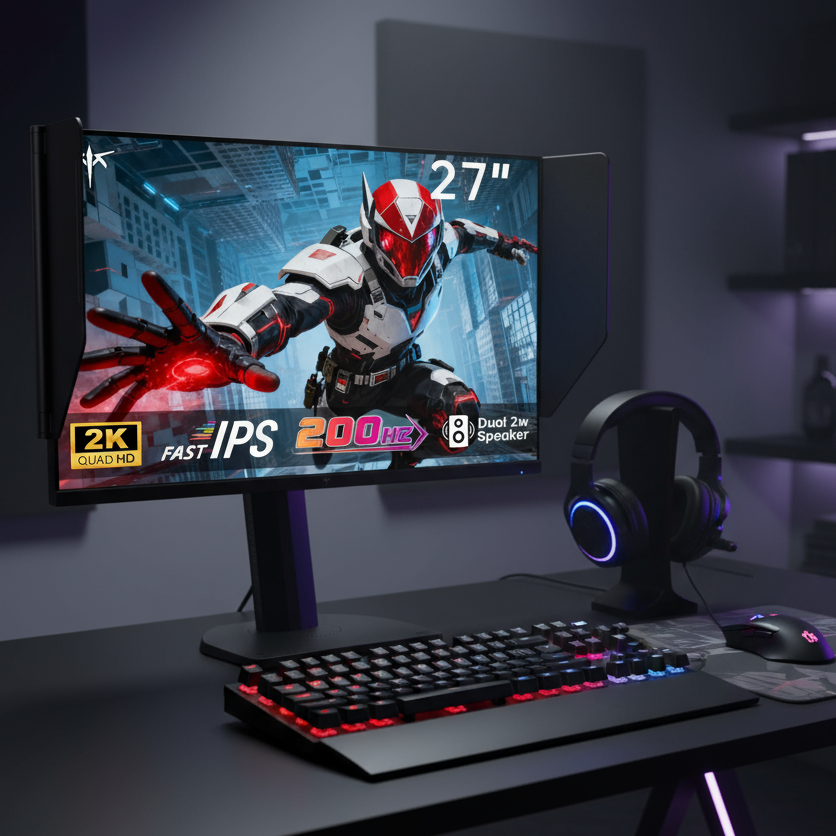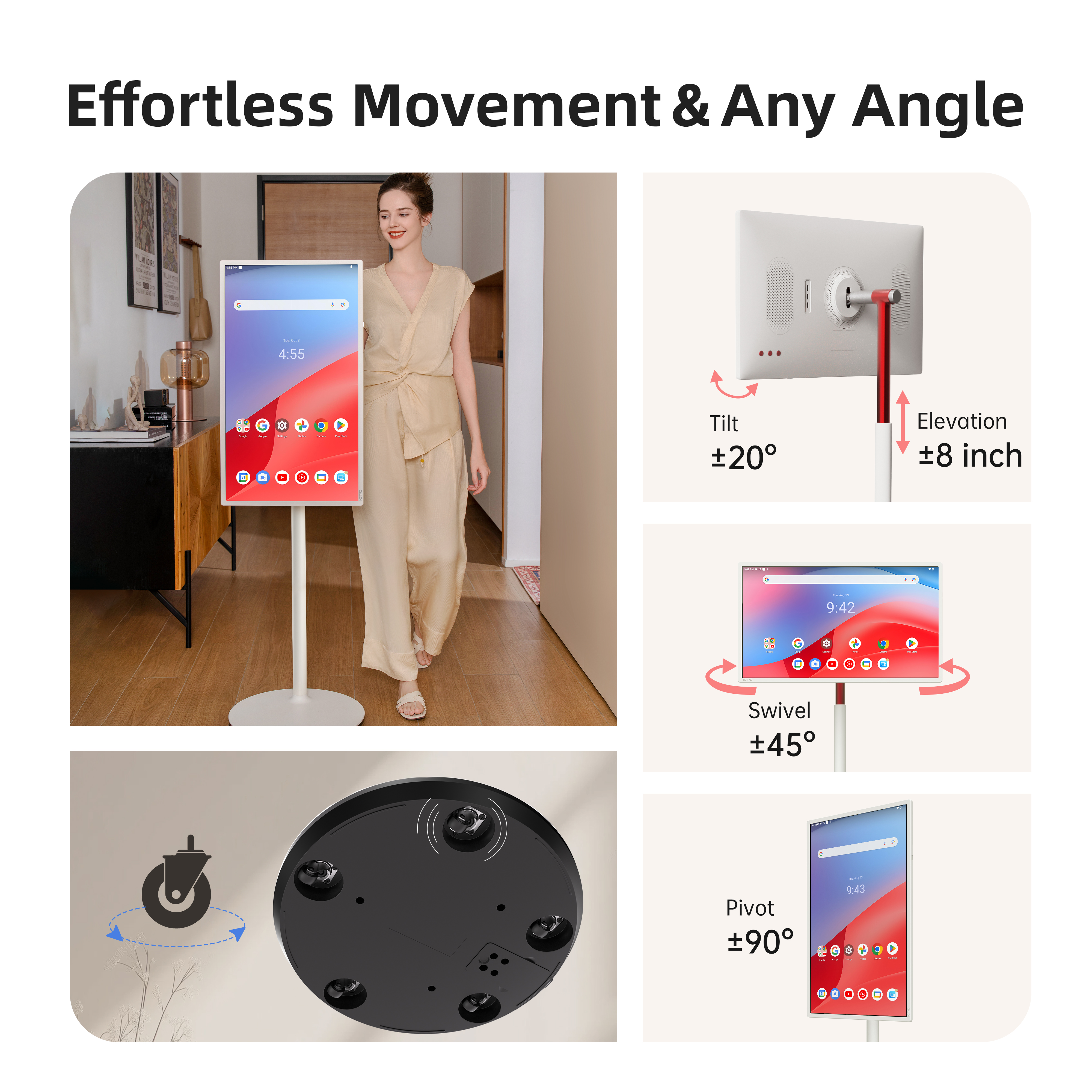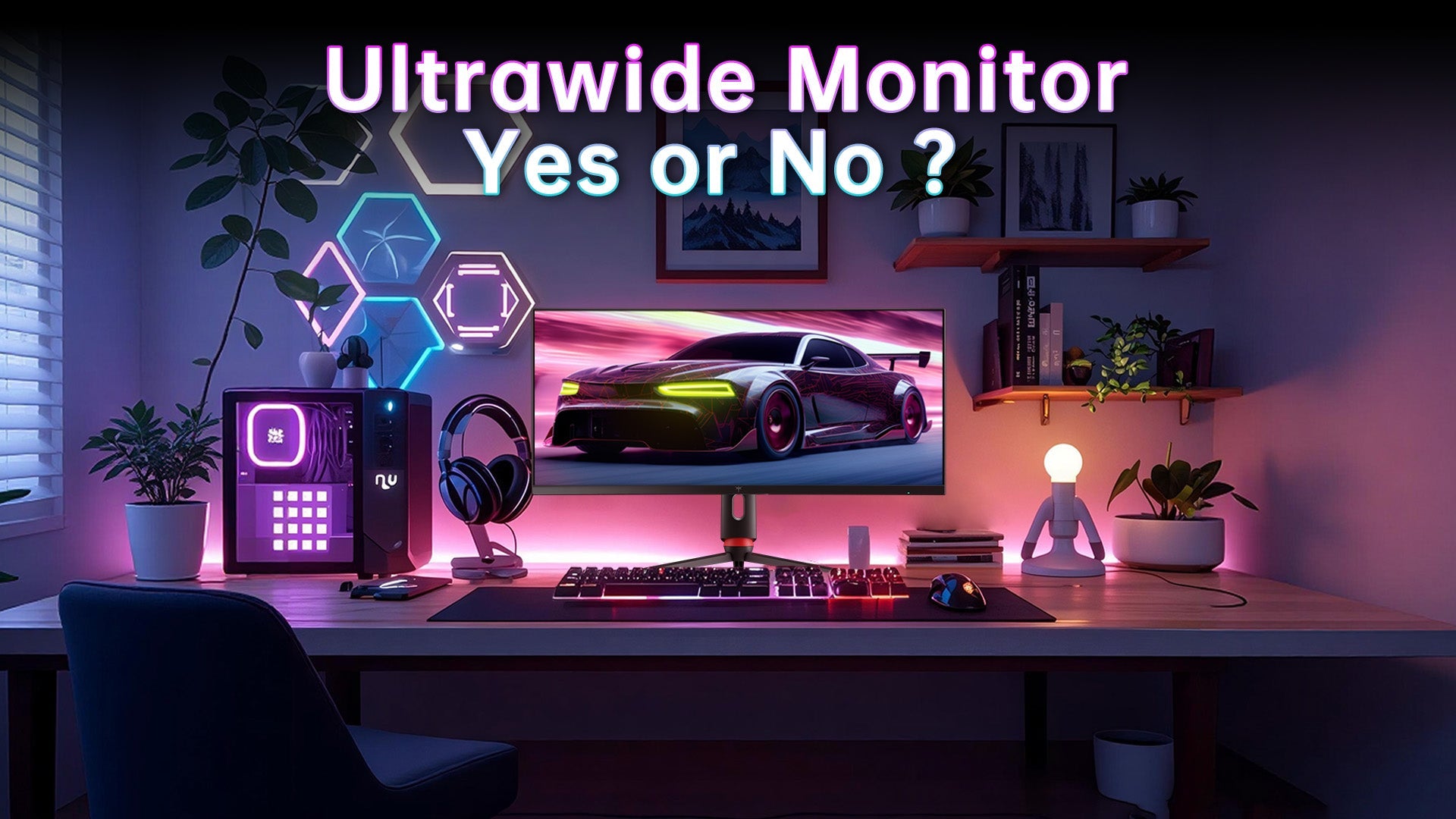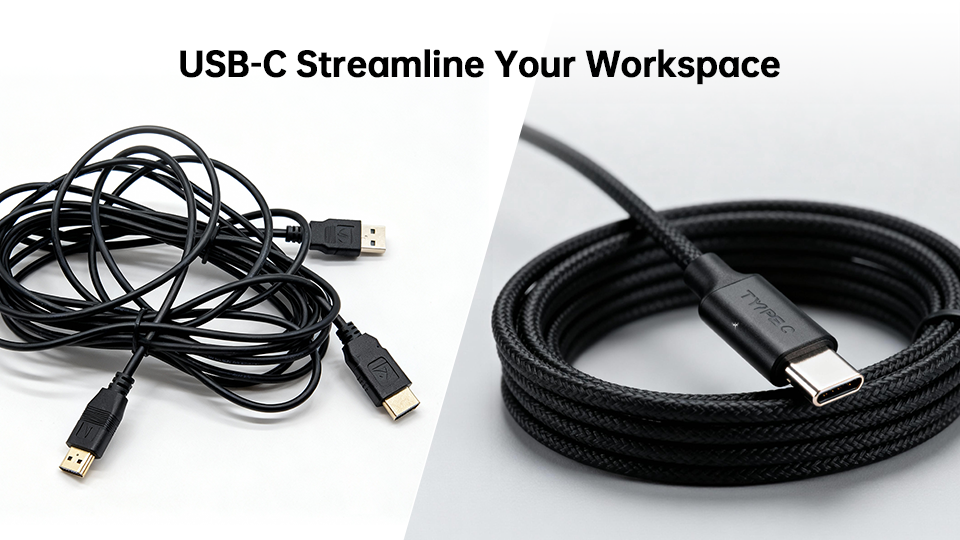The debate between curved and flat monitors is a defining choice for today's PC gamer. While a curved screen might look more futuristic on your desk, the decision goes far beyond aesthetics. It fundamentally alters your gaming experience, especially when it comes to immersion—that feeling of being completely absorbed in the virtual world. This guide will break down the technology, weigh the pros and cons of each design, and help you determine which screen shape is the right choice for your gaming setup.

Understanding the Fundamental Choice in Gaming Displays
Prior to leaping into the arguments, let's understand the basics. Monitor shape is not just a styling element but an engineering choice that will dictate the manner in which you'll get to view the action on the display.
What Is a Curved Monitor?
A curved monitor is a display with a subtle arc, designed to mimic the natural curvature of the human eye. This curvature is measured in "R" ratings, such as 1800R or 1000R. The number represents the radius of a circle in millimeters; a 1000R monitor has a more aggressive curve than an 1800R monitor. The goal of this design is to make the viewing experience feel more natural and to wrap the image around your field of view.
Defining Immersion in the Context of Gaming
In gaming, immersion is the feeling of being physically present in the game world. It's achieved when the hardware and software work together to make you forget you're sitting in a chair staring at a screen. Key factors contributing to immersion include a wide field of view that engages your peripheral vision, a sense of depth, and minimal distractions from your real-world surroundings. The monitor is the primary gateway to this experience.

The Primary Argument for Curved Monitors
The advocates of the curved monitor primarily emphasize the following two prominent benefits that directly serve the purpose of gaming: wider coverage and comfort on long usage.
How a Curved Screen Enhances Your Field of View
A curved display envelops the game world around you, bringing more of the image into the outer reaches of your field of view. This produces a more three-dimensional appearance and increased depth. With a flat display, the edges are farther from your eye than the center is. A curved monitor compensates for this, keeping the whole display at a more consistent distance from your eye. This causes the game world to be larger and more immersive, as if you are peering through a window extending beyond the range you are focused on.
Reducing Eye Strain in Marathon Gaming Sessions
Because the shape of the curved monitor is closer to the eye's natural curvature, eye strain is reduced. Eyes do not have to continually refocus between the inside corner and the outside corner of the monitor. This is a key ergonomic benefit that keeps the eyes operating less and keeps you relaxed and focused during long hours of marathon game playing. For professional gamers, reduced fatigue is a significant benefit.

Why Flat Monitors Are Still a Top Choice for Gamers
Despite the immersive appeal of curved displays, flat monitors remain incredibly popular for several practical and performance-related reasons. Their traditional design offers advantages that many gamers refuse to give up.
The Unmatched Advantage of Geometric Uniformity
Flat monitors present a perfectly uniform, distortion-free image. Every straight line in the game is rendered as a perfectly straight line on the screen. This geometric precision is critical in many applications, especially outside of gaming. For tasks like graphic design, video editing, or even working with spreadsheets, the subtle warping of a curved screen can be a hindrance. This makes flat monitors the more reliable all-around choice.
Versatility for More Than Just Gaming
Most people use their PCs for more than just playing games. A flat monitor is the undisputed champion of versatility. It’s ideal for web browsing, content creation, and productivity tasks where straight lines and pixel-perfect accuracy are paramount. If your gaming rig is also your workstation or daily driver, the practical, do-it-all nature of a flat panel often outweighs the specialized immersion offered by a curve.
A Direct Comparison for Gaming Immersion
When placed head-to-head, the way each monitor shape achieves (or doesn't achieve) immersion is fundamentally different. It's a choice between a screen that envelops you and one that offers a perfect window.
How Curved Panels Simulate Peripheral Vision
The key to a curved monitor's immersive power is its ability to engage your peripheral vision more effectively. By wrapping the edges of the screen toward you, it creates a "cockpit effect" that tricks your brain into perceiving a deeper, more expansive environment. This is especially noticeable in first-person games, where the curve makes you feel like you are truly seeing the world through your character's eyes.
The Undistorted and Familiar View of a Flat Screen
A flat screen provides an experience that is familiar and completely predictable. It acts as a perfect, undistorted window into the game world. While it may not fill your peripheral vision as effectively as a curved panel, it guarantees that you see the game exactly as the developers intended, with no geometric alteration. For many, this pure, unfiltered view is preferable, as it removes any variable introduced by the hardware itself.

Does Your Favorite Game Genre Affect Your Choice?
The ideal monitor shape can absolutely depend on the types of games you play most often. The needs of a competitive esports athlete are vastly different from those of a player exploring a vast open world.
The Case for Curves in RPGs and Racing Sims
For genres where immersion is the primary goal, curved monitors excel. In racing simulators, a curved ultrawide screen creates an incredible sense of speed and situational awareness, mimicking the view from a real cockpit. In role-playing games (RPGs) and open-world adventures like The Witcher 3 or Red Dead Redemption 2, the panoramic view makes landscapes feel more epic and the world more expansive.
The Case for Flat Panels in Competitive FPS and RTS Games
In highly competitive genres like first-person shooters (FPS) and real-time strategy (RTS) games, precision is everything. Players of titles like Counter-Strike 2 or Valorant often prefer flat screens because they ensure there is zero image distortion. A perfectly straight line for aiming is non-negotiable. Similarly, in RTS games like StarCraft II, a flat display makes it easier to manage UI elements and view the map without any warping.
What to Consider Beyond the Screen's Shape
The curve is just one piece of the puzzle. Other factors, like the monitor's size and aspect ratio, work in conjunction with its shape to create the final experience.
The Impact of Ultrawide Aspect Ratios on Immersion
The benefits of a curve are most pronounced on ultrawide monitors (21:9 or 32:9 aspect ratios). On such a wide screen, a flat panel can cause the edges to appear distorted and washed out because you're viewing them at an extreme angle. A curve corrects this, ensuring a more consistent and immersive image across the entire panel. A standard 16:9 curved monitor offers a more subtle benefit.
How Panel Size and Viewing Distance Play a Role
The effectiveness of a curve is directly related to the size of the screen and how close you sit to it. A curve on a small 24-inch monitor is barely noticeable and offers little advantage. However, on a 27-inch screen or larger, where the display fills a significant portion of your field of view, the curve becomes much more impactful. You need to be sitting at the right distance—typically within the monitor's "R" rating—to get the full effect.
Potential Downsides of Each Monitor Type
No technology is perfect. Both curved and flat monitors come with their own set of potential drawbacks that are important to consider before making a purchase.
Glare and Content Distortion on Curved Screens
The curved surface of a monitor can be more susceptible to glare, as it can catch light from a wider range of angles. This can be an issue in brightly lit rooms. Furthermore, while great for gaming, the curve can make non-gaming content look strange. Straight lines in spreadsheets or documents can appear slightly bowed, which may be distracting for productivity work.
Limited Field of View on Standard Flat Screens
The primary downside of a standard 16:9 flat screen is its inherently limited field of view. It creates a distinct "window" effect and doesn't engage your peripheral vision, which can break the sense of immersion. To achieve a wider view with flat panels, gamers often resort to multi-monitor setups, which introduce distracting bezels in the middle of the image.
Making the Final Decision for Your Gaming Setup
With all the technical details covered, the final choice comes down to your personal priorities, how you use your PC, and your budget.
Assess Your Primary Use Case: Work or Play?
Be honest about how you'll spend most of your time. If your PC is a dedicated gaming machine primarily for single-player, immersive titles, a curved monitor is an excellent choice. However, if you split your time evenly between gaming, work, and creative hobbies, the versatility and geometric accuracy of a high-quality flat monitor may be the more practical and logical investment.
Your Budget and Desk Space Considerations
Generally, curved monitors, especially in larger and ultrawide formats, carry a price premium over their flat counterparts. They also tend to have a larger physical footprint, taking up more depth on your desk due to the curve and stand design. Make sure you have both the budget and the physical space to accommodate the monitor you choose.
Choose the Curved or Flat Monitor Now
Ultimately, there is no single "better" monitor type; the right choice depends entirely on your priorities as a gamer and a PC user. Curved monitors offer an unparalleled sense of immersion, depth, and comfort, making them a top contender for those who want to get lost in single-player adventures and simulations. In contrast, flat monitors remain the gold standard for competitive gaming accuracy, content creation, and all-around versatility. Weigh the arguments, consider your favorite games, and choose the screen that will best enhance your personal experience.








Leave a comment
All comments are moderated before being published.
This site is protected by hCaptcha and the hCaptcha Privacy Policy and Terms of Service apply.